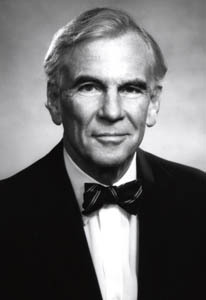Innovation vs. Dinosaurs
Traditional vs. Old
Digital vs. Everything...
We live in a world where Amazon can't get its packages delivered on time; Target can't protect its customers (guests as they call them); the ability to order a customized phone cover is considered a radical advance in consumer personalization; and experiences "suddenly" seem to matter.
In 1972, Ed Ney, then CEO of Young and Rubicam, began to implement a business model that was prescient and decades ahead of its time.
He called it the Whole Egg, the idea being that a consumer/customer/user/buyer/whatever was an organic whole and needed to be approached as such. This was not the same philosophy as 360 degree advertising that still has its adherents today -- if anything, it's the antithesis.
360 degree is a channel view. It is a view imposed by marketers and, as I see it, 360 is going around in circles.
The Whole Egg is based on a consumer view; the understanding that there is no perfectly symmetrical way to pigeonhole a person's viewing/watching/listening/doing habits and the deep insight that data is a key to delivering value to said consumer.
On the business side, it was a radical shift in agency/client relationship, from a series of interactions that tried to cross-sell services and creative to a position of being a client's best partner -- that is, looking at their business challenges, needs and goals and delivering solutions that met the bigger picture.
To that egg end, Ed enlisted Lester Wunderman, who was a pioneer in data-based marketing at a time when no one had ever heard the term. He recruited Walter Landor, who turned logo design from a graphic nicety into a powerful branding and cultural tool, and he co-opted Harold Burson who turned PR into a corporate reputation engine from press releases to saving companies in crisis.
Like most visionary ideas, the Whole Egg didn't hatch overnight. The philosophy was so smart and in some ways so beautifully simple, it was talked about everywhere. But making it work was a longer road. It was too radical, too different. Clients were siloed and frankly, even internally it was difficult to implement, as years of ingrained behavior and knee-jerk territorial protection got in the way.
But the idea did inspire a young man -- me -- and I was blessed to have been on the edge of the curve as the idea took off, and to have worked on some of the legendary business that pioneered the idea -- Colgate-Palmolive and, of all things, the US Postal System -- not to mention the US Army, Citi and others that my friends worked on. And for me, personally, the biggest blessing gave me mentors in Lester and Harold.
And then came the digital revolution -- and the industry that pioneered innovation from print to broadcast to content creation looked the other way and "technology" companies started to eat their lunch, often achieving astounding valuations on little business and no profit and yes, if we are honest, little actual value to clients.
In our own Whole Egg world, it was no different; we who led the industry in content development and production (if we only knew...); we who created the first color TV commercial when that was leading edge; the free-standing insert when that was new and exciting; the first client website when all you could do was click back and forth; we who were leaders in innovation got labeled dinosaurs, were demeaned as "traditionalists."
But the world has changed: the siloes created by the digibabble adherents are opening and chasing after consumers, looking for insight and Whole Egg behavior.
The newest crop of technology start-ups are all about adding value to the physical world through digital tools, and the notion that the whole world is virtual is the true extinct thought.
Digital is everything... but not everything is digital is the true insight, and finally we are able to bring the full power and weight of insight, consumer understanding and actual behavior to bear on adding real value to our interactions with people, instead of subjecting them to meaningless algorithmic loops.
We live in a Whole Egg world. We are by definition imperfect humans, unpredictable, not wholly segmentable, Generation World, global and local Nano trenders. We are not circles. We wobble like that egg -- we use digital channels and tools to get to restaurants and shows; we download TV and movies to watch when we want -- but watch we do; we walk and use public transportation and share rides enhanced by our digital pathfinders; and we share the food we eat, the sights we see and the music we love with a single click -- digital is everything but not everything is digital.
Ed Ney passed away last week at the age of 88. He lived a full and productive life that included a U.S. Ambassador's posting to Canada. But more importantly, he died knowing that the seed that he planted so many years ago had not only borne fruit, but was the true marketing standard that all aspired to.
"The greatest use of life is to spend it for something that will outlast it." -- William James
So as Amazon struggles with shipping and Target with data and others with personalization and experiences -- as the digibabble façade begins to crumble and marketing insight and knowledge is the premium -- I celebrate a true madman of vision and innovation whose legacy has already lasted longer than so many who predicted its demise.
Long may that egg wobble...

